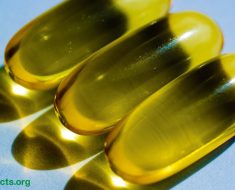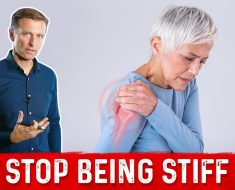Orientation To Acupuncture
Introducing Acupuncture: Enhancing Pain Management and Quality of Life at Kaiser Permanente South San Francisco
Hello, I’m Dr. Joseph Kwok, Chief of Chronic Pain at Kaiser Permanente South San Francisco. You’ve received a referral for acupuncture at our clinic. Your primary care doctor feels you may benefit from acupuncture for your chronic pain, which you’ve had for three months or longer, or for nausea or vomiting from chemotherapy or pregnancy.
Our mission is to help lessen your pain and improve your quality of life through pain management and lifestyle changes. While you might not become pain-free, we hope your pain will be much more manageable and better tolerated. Many have questions about acupuncture, how it works, what to expect, and how our clinic operates. Let’s have our acupuncturists answer some of these questions. This video is in chapters. We recommend you watch it through first. You can revisit a particular chapter to hear specific information again. Let’s get started! What is acupuncture?
Discover the Healing Power of Acupuncture for Chronic Pain Management and More
I’m Merissa Tsang, a licensed acupuncturist in the Chronic Pain Program. Acupuncture is a traditional Chinese medicine that studies have shown can help manage pain and help with other physical conditions like nausea from chemotherapy or during early pregnancy. Very thin sterile needles are inserted into specific acupuncture points on your body. These needles stimulate and increase blood circulation in areas of pain to promote healing and pain relief. These needles are inserted by trained and licensed acupuncturists. We’ll place needles in various parts of your body, most commonly in the arms, hands, lower legs, ankles, feet, ears, face and scalp. The needles stay in your body for about 20 to 30 minutes. Since the needles are so thin, they’re usually painless. During your treatment, you may not even feel them. If you do, you may feel slight throbbing, heaviness, warmth, coolness, achiness or soreness.
Orientation to Acupuncture at Kaiser Permanente South San Francisco | Kaiser PermanenteOne, example of orientation to acupuncture at Kaiser Permanente South San Francisco, could be a new patient attending a session where they are introduced to the treatment, shown the acupuncture rooms and given information on the benefits and potential risks.
Get informed about your first acupuncture visit and what to expect.
Tell your acupuncturist if you have any ongoing or continuous sharp pain different from the sensations just described. What happens on my first visit? Hello, I’m Diane Au, another one of the acupuncturists in the Chronic Pain Program at South San Francisco. Before beginning treatment, you’ll complete a Pain Level Questionnaire. You’ll fill one out before each treatment. We want you to have enough time to find parking, check in, use the restroom and fill out the questionnaire, so you may want to arrive about 20 minutes before your scheduled appointment time.
You’ll be in treatment for about one hour, so be sure you’ve eaten something light and used the restroom before check-in. If you’re at all fearful of needles or nervous about treatment, now’s the time to tell your acupuncturist. You’ll be seated in a chair or lying on an exam table for your treatment.
Experience Acupuncture: Individualized or Group Setting, Sensations During Treatment Explained
Depending on your medical condition, you may receive your acupuncture in a group or an individual setting. We’ll explain more about the difference between the two in a moment. Next, the acupuncturist will clean your skin with an alcohol swab and insert needles at specific acupuncture points. You’ll rest for about 20 to 30 minutes with the needles in place. We may put a heat lamp on your feet so they don’t get cold. Before the acupuncturist leaves the room, we’ll hand you a pager you can press if you need assistance during your treatment. What happens during treatment? People feel different sensations during treatment. You may feel a dull ache, heaviness, numbness or tingling, or a warm or cool sensation. All these are normal. But if you think of discomfort other than these, tell the acupuncturist.
Auricular Acupuncture Group Treatment: Efficient Pain Management with Faster Appointments
If you’re a candidate for auricular acupuncture group treatment, you’ll receive acupuncture with others in a group setting and at specific points in your ears to help manage pain. One benefit of group treatment is that it may allow you to get an appointment sooner. In a group treatment session, up to 12 patients sit in chairs in a circle facing outward and away from each other. To prepare for treatment, if you have long hair, please tie it back, away from your ears, or you can use a hairnet, which we will provide. The acupuncturist will swab each person’s ears with alcohol and place up to 5 needles into each ear. Then, you’ll sit for up to 30 minutes while the lights are dimmed and a guided meditation plays in the background. An acupuncturist will be in the room at all times during the treatment. For patients to have a successful and relaxing experience, please be on time for your appointments. Latecomers will not be allowed to enter the group treatment room.
Post-Acupuncture Expectations and Sensations
What should I expect after my visit? How will you feel after the needles are removed? Everyone feels differently. Some people don’t feel anything immediately after treatment, while others experience sensations that may linger for a few hours and then gradually disappear. Many people feel an increase in relaxation, so please take caution after your treatment when driving a car or operating machinery. Take it easy and avoid strenuous activity for the rest of the day. And be sure to drink lots of water. Numbness, tingling and bruising following acupuncture may occur, especially if you take an anticoagulant medication. Occasionally, there may be swelling, itching, bruising, tingling, lingering soreness, or aching sensations around the acupuncture site that can last up to 48 hours. For more information about this, please review the chapter on Side Effects. How will I know if acupuncture is helping me? At each follow-up visit, you’ll fill out a Pain Level Questionnaire.
Assessing Acupuncture’s Effectiveness: Monitoring Pain Relief and Determining Continued Treatment
This helps us determine if your pain has decreased since starting acupuncture and if you should continue it. Since acupuncture treatment aims to achieve significant and sustained pain relief, we want to hear if you’ve had pain relief after your first, second or third treatment. You can document this on your Pain Level Questionnaire, and we’ll check in with you by email or phone. After your initial treatment, typically, you’ll be scheduled for two additional treatments. After your third treatment, we’ll reevaluate whether you should continue acupuncture. If you’ve experienced significant and sustained pain relief with treatment, that’s great! Your acupuncturist will then determine if a plateau has been reached and if you’ve experienced maximum benefit. But if you have short-lived pain relief, with pain quickly returning to its original base level, that indicates that acupuncture isn’t significantly beneficial for you.
Managing Pain and Enhancing Quality of Life: Acupuncture Clinic’s Treatment Approach and Follow-up Care
We’ll then discharge you and have you follow up with your referring doctor for other possible medical interventions. So, pay attention to your pain and how it may change. While your pain may never go away completely, our goal is to lessen your pain so you can better manage your pain and improve your quality of life. When you reach a plateau in treatment, when you’ve experienced the maximum benefit of pain control, you’ll be discharged from the acupuncture clinic with the option to call us for a flare-up treatment. A flare-up is increased pain in the same body part where you previously had pain, has a moderate to high level of severity and doesn’t resolve on its own within three to four days. If you have a new injury or trauma in the same pain region or pain in a different area, you’ll need to be re-evaluated by your primary care doctor. Are there any side effects?
Managing Pain and Potential Side Effects in Acupuncture Treatment
Sometimes, increased pain in your original affected body part can occur during and after acupuncture treatment. This is known as a pain crisis. While painful, a pain crisis frequently results in a decrease from your original baseline level of pain. An increase in pain lasting up to 72 hours after the procedure is typical in up to 20 to 30 per cent of patients. Increased pain in your original affected body part lasting up to a week or more only occurs in about 5 per cent of patients. Warm compresses, a heating pad, or hot soaks with Epsom salts on the affected area can help reduce discomfort. Follow the directions on the Epsom salt container. If you have increased pain lasting longer than three days, with increasing intensity or new pain you feel is related to acupuncture, please call the acupuncture department. If you think it’s a life-threatening condition, call 911 or go to the nearest Emergency department. What else can I do to help manage my pain?
Enhancing Acupuncture Results: Self-care and Dietary Tips for Long-Term Pain Management
Acupuncture is not generally used as a long-term therapy. We encourage you to participate in self-care to manage your pain better. Activities such as stretching, exercise, stress management, self-massage, self-acupressure, and dietary changes may enhance your acupuncture treatment results and increase the potential for long-term benefit. Staying hydrated, getting sufficient sleep, and resting your area of pain may also help you feel better. We suggest eating an alkaline diet. This balanced diet includes many fruits and vegetables, less red meat, dairy products, wheat, and sugars. If you have arthritis, try to avoid foods in the nightshade family, such as tomatoes, potatoes, eggplant and all peppers. Turmeric supplements of 1,000 to 1,500 milligrams a day may be helpful for those suffering from pain by reducing inflammation. Incorporate lemon into your diet, as lemon is an alkaline superfood when taken internally.
Important Information for Acupuncture Patients
An excellent way to do this is to drink lemon water, which is water with lemon slices or lemon juice in it. What else should I know before I come to acupuncture? Remember to arrive early enough before your appointment to allow time to check in and fill out a Pain Level Questionnaire. Late patients will not be permitted to enter the group treatment room. We prefer that you refrain from taking any prescription or over-the-counter pain medication on the day of your appointment so that we can better gauge how the acupuncture is affecting your pain. After your acupuncture treatment, if you experience ongoing pain, you may resume taking pain medication as needed. Please take all other medications as prescribed by your doctor. If you’ve had a steroid injection, you must wait at least two weeks after the steroid injection before starting acupuncture. If you’re scheduled for physical therapy on the same day as your acupuncture treatment, we recommend going to physical therapy first.
Important Reminders for Your Acupuncture Appointment
Wear comfortable, loose-fitting clothes, especially pants that can be pulled up over the knee or shirts with sleeves that can be pushed up over the elbow. Use the restroom before each treatment. Make sure your hair is away from your ears. Please don’t come to your appointment hungry, after a rigorous workout or under the influence of alcohol, drugs or caffeine. It’s best not to consume any caffeine on the day of treatment. And please avoid wearing perfume, cologne or strongly scented products—our contact information. Please call our department to let us know if you’re running late, unable to keep your appointment or have questions. If you have to cancel your appointment, we appreciate 24-hour notice.
We look forward to helping you better manage your chronic pain through acupuncture and lifestyle changes. Thank you…






